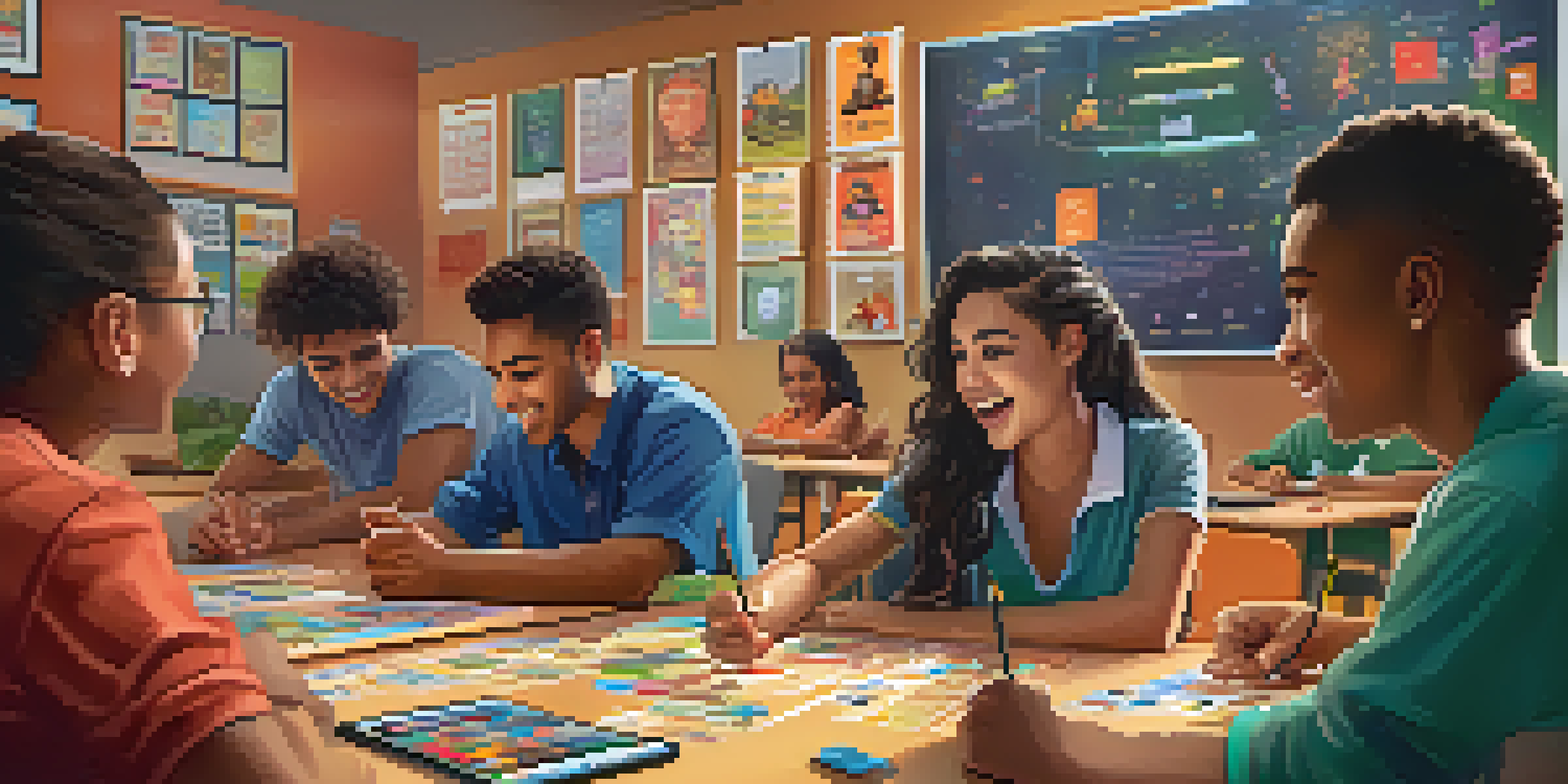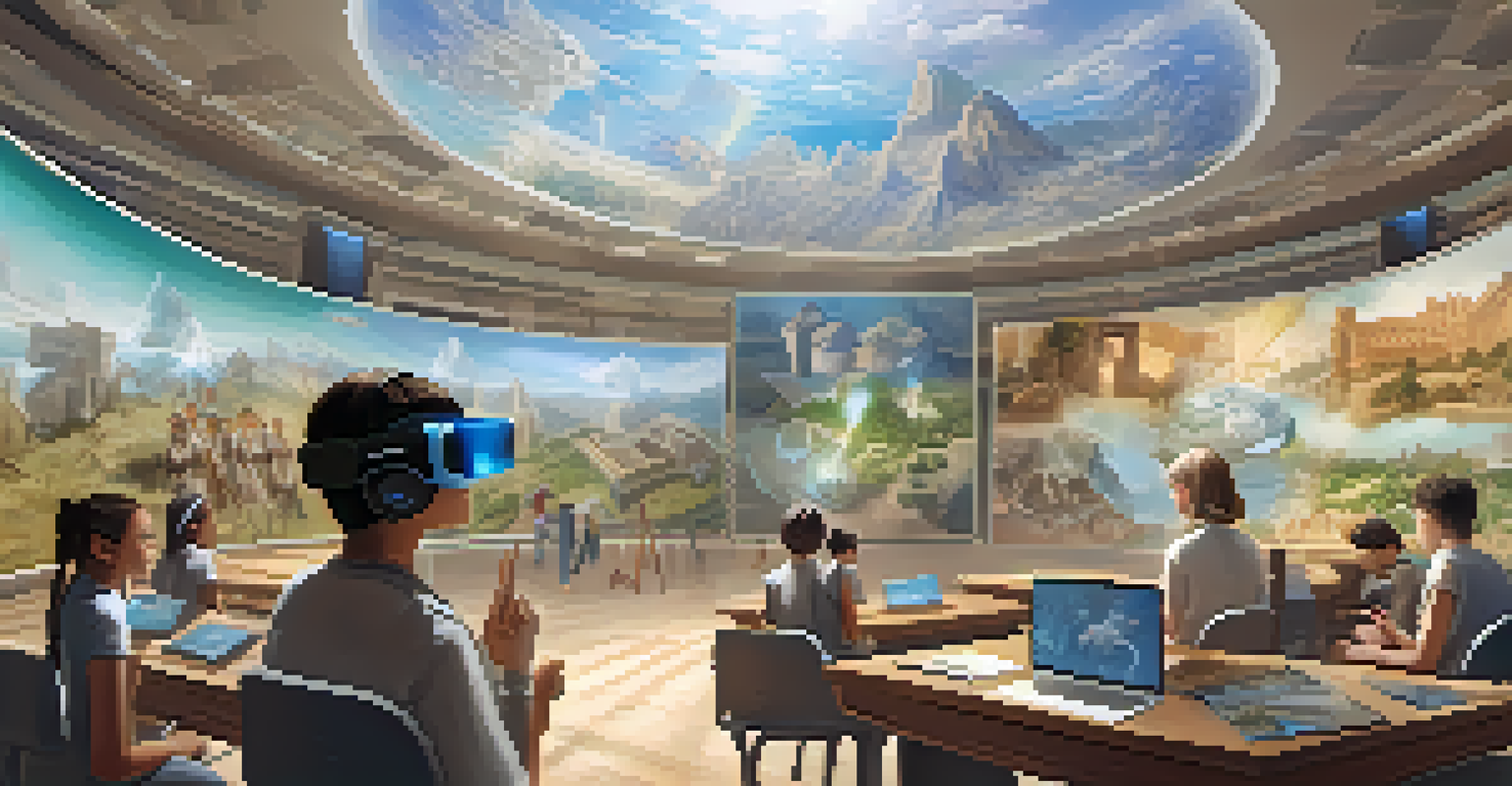The Role of Gamification in Online Classroom Engagement

Understanding Gamification in Education
Gamification refers to the integration of game-like elements in non-game contexts, such as education. In online classrooms, this can mean using points, badges, or leaderboards to motivate students. The core idea is to make learning more interactive and fun, akin to the excitement found in video games.
Gamification is the application of game-design elements and game principles in non-game contexts.
By incorporating these elements, educators can tap into students' natural competitive spirit and desire for achievement. Gamification transforms traditional learning into an engaging experience, encouraging participation and effort. It’s like turning a mundane task into a thrilling adventure.
Ultimately, gamification seeks to enhance the learning process by making it more enjoyable. When students feel motivated and excited about their coursework, they're more likely to stay engaged and perform better. This approach has gained popularity, particularly in online education settings.
Benefits of Gamification in Online Learning
One of the main benefits of gamification is increased student motivation. When learning activities are framed as challenges or games, students are more inclined to take part. This increase in motivation can lead to higher completion rates for courses and assignments.

Moreover, gamification can foster a sense of community among students. Features like team challenges or collaborative quests encourage learners to work together, share ideas, and support each other. This social aspect can be particularly vital in online environments where students may feel isolated.
Gamification Boosts Student Engagement
Incorporating game-like elements in education makes learning more interactive and motivates students to participate actively.
Additionally, gamification provides instant feedback, allowing learners to track their progress. This real-time feedback loop helps students understand their strengths and areas for improvement. It’s like leveling up in a game; you know exactly where you stand and what you need to do to advance.
Gamification Techniques for Online Classrooms
There are various techniques educators can use to implement gamification effectively. For instance, incorporating quizzes with points systems can make assessments feel less daunting and more engaging. Students can earn rewards for participation, which keeps them motivated throughout the course.
The greatest reward in education is to see students engaged and thriving.
Another popular technique is the use of storytelling or narrative within the curriculum. By framing lessons as quests or adventures, students are drawn into a compelling storyline that makes learning feel more relevant and exciting. This technique helps them see the real-world application of their studies.
Lastly, leaderboards can be an effective tool for encouraging healthy competition. When students see their names among their peers, they may feel inspired to put in extra effort to improve their ranking. However, it’s essential to balance competition with collaboration to foster a supportive learning environment.
Challenges of Implementing Gamification
While gamification offers numerous benefits, there are challenges educators must consider. One major hurdle is ensuring that gamified elements align with learning objectives. If the focus shifts too heavily to competition and rewards, students may lose sight of the core educational goals.
Additionally, not all students respond positively to gamification. Some may feel overwhelmed by competitiveness or disengaged if they don't excel in game-like settings. It's critical to create an inclusive environment where all students can thrive, regardless of their gaming skills.
Community Building in Online Learning
Gamification fosters collaboration among students through team challenges, creating a supportive online learning environment.
Furthermore, technical limitations can be a barrier in online classrooms. Not every platform supports gamification features, and educators may struggle to find the right tools. Investing in the right technology and training is essential to overcome these challenges.
The Role of Feedback in Gamified Learning
Feedback is a cornerstone of effective gamification. It not only informs students of their progress but also helps them stay engaged and motivated. When learners receive timely and constructive feedback, they are more likely to adjust their efforts and improve.
In gamified environments, feedback can be instant and integrated into the gaming elements. For example, when a student completes a task, they might immediately see their score, rewards, or next steps. This immediate response can enhance learning by reinforcing positive behaviors.
Moreover, encouraging peer feedback can further enrich the learning experience. When students provide input to each other, they gain different perspectives and insights. This collaborative feedback loop contributes to a more interactive and community-oriented learning atmosphere.
Real-World Examples of Gamification Success
Several educational institutions have successfully implemented gamification strategies. For instance, platforms like Kahoot! allow teachers to create interactive quizzes that feel like games, capturing students' attention. These tools have seen significant increases in engagement and participation.
Another example is Duolingo, a language-learning app that utilizes gamification to encourage daily practice. With features like streaks, levels, and rewards, it turns language learning into a fun and addictive challenge. Users are more likely to stay committed due to the game-like experience.
Feedback Enhances Learning Experience
Instant feedback in gamified settings helps students track progress and adjust their efforts, promoting continuous improvement.
These examples demonstrate how gamification can transform learning experiences across various subjects. By adopting similar strategies, educators can create engaging online environments that motivate students to excel.
The Future of Gamification in Online Education
As technology continues to evolve, the future of gamification in online education looks promising. With advances in virtual reality (VR) and augmented reality (AR), educators will be able to create even more immersive learning experiences. Imagine students exploring historical sites or conducting virtual science experiments as part of their lessons.
Moreover, artificial intelligence (AI) can personalize gamified experiences, tailoring challenges to individual student needs. This customization will ensure that all learners remain engaged, regardless of their skill level. With AI, gamification can adapt in real-time, presenting suitable challenges and rewards.

Ultimately, the integration of gamification will likely become more widespread as its benefits become undeniable. As educators continue to innovate and embrace new technologies, online classrooms will evolve into dynamic, interactive environments that keep students motivated and engaged.